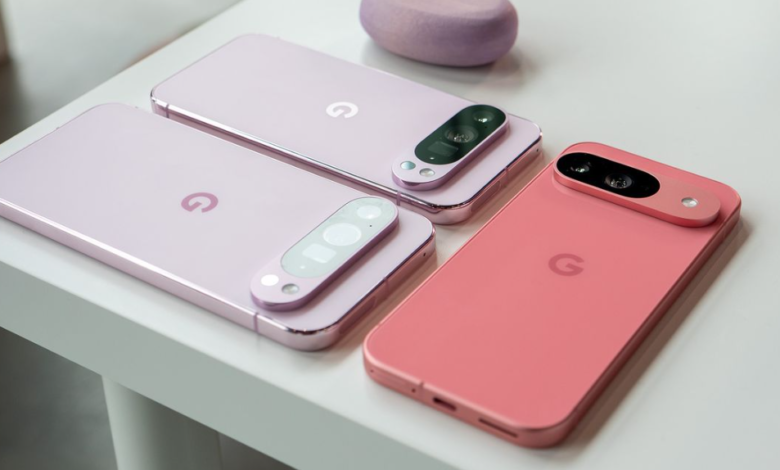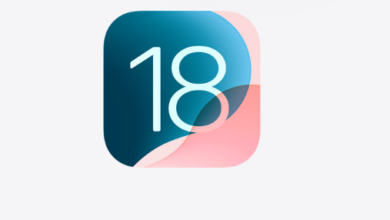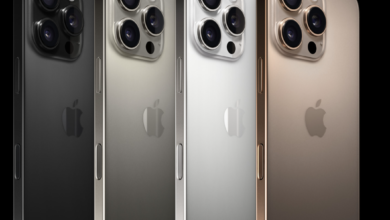Google Pixel 9

The Google Pixel series has consistently set new standards for Android smartphones, offering cutting-edge technology, seamless software integration, and stunning photography features. The Google Pixel 9, the latest addition to this remarkable lineup, is no exception. Packed with new innovations and improvements, the Pixel 9 promises to redefine the smartphone experience in 2024.The Google Pixel 9 boasts a refined design that combines elegance and durability. With its sleek, premium build, the phone offers a comfortable grip, while its improved Gorilla Glass provides extra protection against drops and scratches. Available in various stylish colors, the Pixel 9 aims to captivate users with its aesthetics as much as with its performance.
Table of Contents
Introduction: Google Pixel 9, The Future of Smartphones through AI
The tech community is abuzz with excitement as Google prepares to release its latest flagship, the Google Pixel 9.. Google’s Pixel Series is known for its cutting-edge AI technologies, excellent photography, sleek designs, and user-friendly experiences. How does the Pixel 9 compare to its predecessors, though? What makes it unique in an extremely competitive market?
This article will explore the Google Pixel 9 from its design, to its AI capabilities, and how it intends to shape the future of smartphones.
Google Pixel Design and Build quality
First impressions of smartphones are often influenced by the design. The Pixel 9 is a continuation of Google’s minimalist, sleek aesthetics. It also emphasizes durability and ergonomics. Let’s look at the Pixel 9 design features.
Durability of Materials and Construction
The Pixel 9 will be made of a combination between aluminum and Gorilla Glass Victus on the front and rear panels. This combination provides both lightweight handling as well as rugged durability. The Pixel 9 is water and dust-resistant, and has an IP68 rating. This will give users peace of mind in everyday use, even under extreme conditions.
Display Features and Quality
Google has added a 6.7-inch OLED screen to the Pixel 9 that boasts a 120Hz refreshrate, ensuring fluid scrolling and smoother gaming. HDR10+ means vivid colors and deeper contrasts for watching media or playing video games. The display includes a fingerprint scanner under the display, which enhances security without compromising its sleek appearance.
Pixel Nine’s Aesthetic Appeal
Google will likely continue to offer soft pastel colors, as well as the classic black-and-white versions. The Pixel 9 is streamlined thanks to its minimalist camera bump. It avoids the bulky appearance of some other smartphones.
Hardware and Performance of Google Pixel 9
Google continues to use custom silicon in its Pixel series with the Tensor G3 processor found in the Pixel 9 This custom processor is designed to perform AI tasks more efficiently, while still providing a high-end smartphone experience.
Tensor G3 chip: Powerful and versatile
Google’s Tensor G3 processor is at the heart of the Pixel 9, which offers significant improvements in terms of processing power, AI, and machine learning. This chip was designed to compete against Apple’s A17 Bionic, Qualcomm’s Snapdragon 8 Gen 2 and other chips. It is expected to offer enhanced multitasking and faster app launches, as well as improved battery efficiency.
RAM and Storage Capacities
Pixel 9 comes in a variety of configurations. The base model has 8GB RAM, but can be upgraded to 12GB if you need more performance. Storage options range from 128GB up to 512GB. There is no microSD slot, which is a trend that’s common among flagship devices.
Real World Performance Benchmarks
Early benchmark tests show that the Pixel 9 is likely to outperform the Pixel 8 in terms of CPU and GPU performance. It is therefore a great device for video editing, gaming and other tasks that require a lot of processing power. The phone is a great choice for gamers, as it can handle the most demanding games with ease. It also provides smooth frame rates, and minimizes lag.
Software: Android 14 Integration
Google’s latest mobile operating system, Android 14, will be shipped with the Pixel 9. Pixel devices are always among the first to get new Android features and updates.
New Android Features in Pixel 9
Android 14 brings a number of new features including improved battery optimization, gesture navigation and privacy controls. Google has improved the support for tablets and foldable devices, making Pixel 9 software more adaptable.
Customization Options
Android is known for its ability to customize the user’s experience. Material you allows users to customize color palettes and fonts as well as widgets for a more personalized look. These customizations are even more advanced on the Pixel 9 with dynamic theming, which adapts your phone’s interface according to the wallpaper you choose.
AI and Machine Learning Features
Google has always highlighted the power of AI on its Pixel devices. The Pixel 9 is no different. The Pixel 9 is one of the most intuitive phones available thanks to the integration of AI and Machine Learning.
Google Assistant with AI
Google Assistant on Pixel 9 now responds faster and better understands context. If you ask the Google Assistant to “show my photos from last week”, it will pull up pictures based on date and location data.
Machine Learning in Photography and Apps
The Pixel 9 is able to learn user behaviour over time and optimize app launch times. The technology is embedded in the camera system and allows for real-time adjustments of lighting, focus, exposure, and other parameters based on subject.
Google Pixel 9 Camera: A New Era in Photography
Google Pixel phones are known for their amazing cameras. The Pixel 9 takes mobile photography to a new level with its improved hardware and software.
Specifications and Features of the Rear Camera
The Pixel 9 is equipped with a 50MP sensor as well as a 12MP sensor for ultra-wide shots and a 48MP lens with 4x zoom. Google’s computational software combines these lenses to produce sharper and more detailed images even in low-light conditions.
Computational photography: How AI changes photography
computational imaging is one of the Pixel’s key features. It uses AI to improve image quality. This technology automatically adjusts the exposure, reduces noise, and improves color accuracy, providing users with near-professional-quality photos with just a click.
Video Capabilities
The Pixel 9 offers 8K recording with 30fps. This feature is normally reserved for flagship smartphones. Google also launched Cinematic mode which automatically adjusts the focus during recording. This gives your videos a professional look, without the need for any post-processing.
Battery life and Charging Technology
Battery capacity and usage efficiency
The Google Pixel 9 is equipped with a large battery that offers a significant battery improvement over previous Pixel models. The large battery capacity allows the phone to easily last a whole day, even with heavy use. This includes streaming videos, playing games, using navigation or switching between multiple apps.
Google is also focusing on battery-optimization through the software improvements in Android The adaptive battery learns how you use your phone, and prioritizes power for apps that are used most often while limiting background activities for apps that are less frequently used. The phone is able to manage power more efficiently, which extends battery life without the need for constant charging. Battery Health Management System is another key component to battery efficiency. It helps prevent overcharging, and extends the lifespan of the battery. Extreme battery saver allows users to extend the life of their phone in emergencies by reducing non-essential functions.
Wireless Charging & Reverse Charging
The Google Pixel 9 is compatible with wireless charger. This allows users to charge their phones without using cables. The Pixel 9 is compatible with Qi wireless charging and can be charged by any wireless charger pad. The user can easily recharge their batteries without having to deal with tangled cables. Wireless charging is also compatible with Google’s Pixel Stand. This stand can charge your phone and turn it into a smart screen for notifications, smart home control, and Google Assistant.
The Pixel 9 has a reverse-wireless charging feature, which is also called BatteryShare. This feature allows you to use the Pixel 9 as a wireless charger for other devices such as smartwatches or wireless earbuds. The Pixel 9 is a versatile device that can be used to stay charged throughout the day. This feature is especially useful when traveling, or in situations where there are no power outlets available.
Together, these two charging technologies — fast-wireless charging, and reversible charging — enhance the Pixel 9’s flexibility and convenience. It is a market leader when it comes power management.
Pixel 9 Security and Privacy
Device Security Features
The Google Pixel 9 is equipped with a number of advanced security features to protect your data as well as your device. The TitanM3 security chip is one of the most notable components. It is designed to offer hardware-based protection. The Titan M3 chip secures sensitive information, such as passwords and encryption keys. It also protects your data from external threats.
One of the key features is the Fingerprint Scanning and Face unlock. Both are built into the phone for quick and secure access. The fingerprint scanner can be found under the display to make it easier to use. Face Unlock, on the other hand, uses facial recognition technology that is advanced in order for only the owner of the phone to unlock it. These biometric options provide enhanced security without compromising on convenience.
Pixel 9 also includes the built-in Android security features such as Google Play Protection which scans continuously for malware and suspicious behavior. All downloaded apps will be safe and won’t pose any security risks. Google provides security updates every month to keep the Pixel 9 updated with the latest security patches.
Google Commitment to Privacy
Google’s Google Pixel 9 places a high priority on privacy. Google has taken a number of steps to protect users’ information. On-Device Processing is one of the most notable features. This means that sensitive data, such as voice commands and facial recognition, is processed on the phone rather than sent to Google servers. This reduces the amount that personal data is shared with cloud services and adds an additional layer of privacy.
Google has also included a number of privacy options on the Pixel 9 to give users greater control over their data. Users can control app permissions, for example, to determine what data an app can access. This includes location, camera or microphone. The privacy dashboard allows users to see what apps have accessed and revoke those permissions as needed.
Google also offers a feature in its Photos app called “Locked File” that allows users to save sensitive photos and video in a folder with a password. This folder will not appear in the gallery. It ensures your personal media is kept private even if another person has temporary access to the phone.
Google’s commitment extends beyond its devices. They have promised five-years of security updates to the Pixel 9 to ensure long-term privacy. The Privacy Sandbox has also been enhanced to increase transparency and give users the peace of mind they need that their data will be safe.
The Google Pixel 9 is one of the safest smartphones on the market, thanks to its comprehensive security measures. It offers protection both at the hardware and software level.
5G and Connectivity in Pixel 9
5G Network Speeds and Capabilities
The Google Pixel 9 was designed to maximize mobile connectivity. It offers 5G, which dramatically increases download and upload speed, as well overall network performance. Users can enjoy speeds up to five times faster than those of 4G. This makes activities such as streaming 4K video, downloading large files and playing online gaming more efficient.
Pixel 9 supports Sub-6GHz 5G as well as mmWave (5G. This allows users to enjoy 5G benefits regardless of where they are. Sub-6 GHz is best for a broader coverage in rural and urban areas. mmWave, on the other hand, offers lightning fast speeds in densely populated places, like city centers and large stadiums. The Pixel 9’s dual compatibility allows it to deliver a consistent experience, whether you are in a high speed zone or require long-range connectivity.
The Pixel 9 also features intelligent switching which allows the phone to seamlessly switch between 4G LTE or Wi-Fi based on the strongest connection. This conserves battery life while maintaining strong connectivity in areas with limited 5G coverage.
WiFi 6E and Bluetooth Enhancements
The Google Pixel 9 also offers the latest advancements of WiFi 6E. Wi-Fi 6E uses the newly released 6GHz band to provide more bandwidth in areas with high traffic, such as apartment buildings and public venues. The Pixel 9 is able to handle more devices connected to the same network with Wi-Fi 6E without sacrificing performance or speed. This allows for smoother streaming, gaming and video conferencing.
Wi-Fi 6E offers enhanced latencies as well as stability of the network. This is especially beneficial for users who rely on real-time communications or gamers. Wi-Fi 6E’s high throughput, reduced interference and low latency ensure that your Pixel 9 is connected to a fast, reliable internet even when other devices are vying for bandwidth.
The Pixel 9 is also equipped with the latest Bluetooth technology. Bluetooth version 5.3 offers significant improvements in terms of connectivity and power efficiency. Bluetooth 5.3 improves audio quality, providing better wireless sound as well as more stable connections to devices such wireless earbuds and speakers. This Bluetooth version also uses less energy which can help save battery life if you use connected devices all day.
The Google Pixel 9’s combination of 5G, Wi-Fi6E, and Bluetooth 5 offers the latest connectivity options, ensuring users can always stay connected with the fastest speeds and most reliable efficiency. These technologies provide seamless mobile experiences, whether you’re streaming, transferring data or making calls.
Customization and User Experience in Pixel 9
User Interface Enhancements
The Google Pixel 9 offers a refined and optimized user experience thanks to a number of User Interface Enhancements which make everyday interactions more fluid, intuitive and visually appealing. The Pixel 9 runs on Android 14. and introduces smoother animations and transitions. Everything from opening apps to browsing menus feels more polished and responsive.
One feature that stands out is MaterialYou design language. This allows the interface to adapt dynamically to the wallpaper you choose, changing colors for app icons, system elements, widgets and other system elements. The result is a phone that feels truly personal to the user.
Android 14 has refined the notification system, making it easier to manage messages and alerts. Users can prioritize notifications to ensure that the most critical ones are displayed first, while other alerts will be grouped or muted. Lock screen widgets have been improved to provide quick access essential functions such as music controls, weather updates and smart home settings, without having to unlock the phone.
gesture control has also been enhanced to provide more precise responses. With a few swipes, users can switch between apps, go back to the homescreen, or even access Google Assistant. These gestures improve the overall user experience by reducing the need to press buttons.
Customizable settings for a tailored experience
The customizable options are one of the main features that set the Google Pixel 8 apart. This allows users to customize their device according to their needs and preferences. Google is putting a lot of emphasis on giving the user more control over their phone’s appearance, behavior, and interaction with them.
The “Theme Engine” is at the heart of this customization. It allows users to fine-tune fonts, colors, and icon shapes according to their own personal style. Users can choose from a wide range of pre-made theme options or create a custom theme using a wallpaper, and then let the phone adjust the system colours to match. This feature allows each Pixel 9 to be unique and customized right from the beginning.
‘s home screen offers a wide range of customization options, including the ability to rearrange icons, resize widgets and change the layout. The at a Glance option on the homescreen offers smart suggestions. It shows important updates such as traffic conditions, calendar dates, and reminders that are tailored to your daily schedule.
Google also provides more control over settings to allow users to manage permissions for apps with ease. The privacy dashboard provides a clear view of the data that apps have access to (e.g. location, camera, mic) and allows users revoke permissions in a single click. Quick Setting menu allows users to customize the features they want, such as battery saver mode, Do Not Disturb Mode, and dark mode.
gestures are another area for customization. Users can customize how they interact on their phone by using gestures. For example, users can swipe down the fingerprint sensor to see notifications or double tap the back to perform actions such as taking a screenshot.
The Sound & Haptics Settings allow you to customize ringtones and notification sounds as well as vibration patterns. Users can assign different sounds to contacts so they instantly recognize important calls or messages.
The Google Pixel 9 offers a user-friendly experience with UI improvements, and customizable options. The Pixel 9 allows you to customize the look and feel, as well as privacy settings, to fit your lifestyle.
Google Pixel 9 compared to its competitors
iPhone 15 and Pixel 9: Detailed Comparison
It is clear from a comparison of the Google Pixel 9 and the iPhone 15 that each smartphone caters to different users. Each excels in specific areas. This is a detailed comparison of these two flagship smartphones:
- Design:
The Google Pixel 9 is a minimalistic design that maintains Google’s minimalist approach. It features a back made of glass, and a aluminum body. Both feel sleek and premium. The camerabar is a distinctive design that makes it easily recognizable. iPhone 15 is Apple’s most traditional design. It features a refined Flat-edged Design and Ceramic Shield to make it more durable. Both phones are IP68 dust and water resistant, which ensures durability under harsh conditions. - Display:
The Google Pixel 9 has a OLED display that delivers smooth scrolling with vibrant colors. It is perfect for gaming and media consumption. The iPhone 15 offers a smaller 6.1″ Super Retina XDR Display but still boasts Apple’s renowned color accuracy. It is perfect for viewing under direct sunlight. The Pixel has a higher refresh rate and supports HDR10, while both displays are compatible with Dolby vision.
- Performance:
The Google Pixel 9 runs on the Google Tensor G3 processor. This is optimized for AI-driven features like voice recognition, smart assistants, and photography. The iPhone 15 is powered by the A16 Bionic chip which is known for its outstanding performance in gaming, video-editing, and multitasking. The A16 Bionic is faster than the Tensor G3 and excels at AI-related tasks, while the Pixel 9 is better for photography. - Camera Quality:
Both phones are excellent at photography, but they approach it in different ways. The Google Pixel 9, with its 50MP sensor and AI-powered computation photography raises the bar in smartphone cameras. The Night View, Super Res Zoom and True Tone feature make portrait and low-light photography spectacular. The iPhone 15 is equipped with a sensor of 48MP and excels at video recordings. It also offers smoother 4K videos with Cinematic mode. Professional photographers will love the iPhone’s ProRAW, ProRes, and HTML2_ProRes HTML2_ features, but casual users who want vibrant, shareable images with little effort, may prefer the Pixel 9. - Battery life
The Google Pixel 9 comes with a battery that can last a full day, even when used heavily. It optimizes power usage based on the user’s habits when combined with Adaptive battery. The iPhone 15 with its smaller battery relies heavily upon the A16 chip. It has a good battery, but it may not last as long under the same conditions as the Pixel 9, especially for power users. - Software:
The software experience is the key difference. The Google Pixel 9 offers a high level of customization with Materials You. The iPhone 15 runs iOS 17 which is known for its security and integration with other Apple devices like the MacBook iPad and Apple Watch. Android is more flexible, but iOS is refined and more user-friendly.
Both phones are outstanding in their own way. The iPhone 15 is a great choice for users who are looking for performance, ecosystem integration and video capabilities. Meanwhile, the Google Pixel 9 has a lot to offer in terms of AI, camera capabilities and Battery Life. Your choice will ultimately depend on whether you prefer iOS or Android, and how important photography is to you.
Pixel 9 vs Samsung Galaxy S25: Which Is Better?
These two Android powerhouses have many similarities but also significant differences. Let’s take a look at the differences between them:
- Design:
The Pixel 9 is a minimalistic, functional phone with a camera bar. Samsung Galaxy S25, on the other hand, focuses more on premium materials, a futuristic look, and an edge-to-edge screen that’s almost bezel-free. Samsung’s dynamic AMOLED 2X wraps around the edges slightly, giving it a much more immersive experience compared to Pixel 9’s flat screen. Both phones feature high-quality materials, and IP68 waterproof resistance. However, Samsung’s design will appeal to users who prefer sleek, ultramodern devices. - Display:
Galaxy S25 features a Dynamic AMOLED Display with quad HD+ resolution. 120Hz adaptive refresh rate can be scaled from 1Hz to120Hz depending on the content displayed. This conserves battery power when high refresh rates don’t need to be used. The Google Pixel 9 is impressive with its OLED display. It also has a 120Hz refresh rate . But Samsung goes further with a higher resolution as well as more vibrant and punchy colors. The Galaxy S25 offers a display that is unbeatable for display enthusiasts. - Performance:
The Samsung Galaxy S25 runs on the Qualcomm Snapdragon 8 Generation 3 , which is a high-performance processor. It is a great choice for heavy multitaskers and gamers. The pixel 9 with its Tensor G3 processor is also an excellent performer. This is especially true for AI-driven tasks such as real-time translation of languages, voice recognition and smart photography. Samsung’s chipset is superior to the Pixel 9’s Tensor chip in terms of gaming and raw power. - Camera:
Google’s computational photography and the Pixel 8 are unmatched. The Pixel 9 has features like night sight and magic eraser that give it an edge when post-processing photos and taking everyday photographs, especially in difficult lighting conditions. Galaxy S25 offers greater versatility thanks to its digital zoom. The Pixel 9 offers more realistic, natural images. However, the Galaxy S25 is a better choice for users who prefer high resolution photos, and powerful Zoom. Samsung offers controls that are more advanced to those who prefer to manually adjust camera settings. - Battery life
The adaptive rate on Samsung’s phone helps to conserve battery life. Google’s Adaptive Battery, found in the Pixel 9, learns your habits to optimize power consumption. This makes both phones comparable for day-today use. Fast Charging is offered on both devices. The Galaxy S25 offers 45W rapid charging which slightly surpasses the Pixel 9’s 30-W rapid charging. - Customization and Software
The Google Pixel 9 is a bloatware free version of Android 14.. It’s perfect for those who want a simple interface and quick updates from Google. Galaxy S25 is based on Samsung One UI instead of Android 14.. This offers a richer experience and more customization options. Samsung’s dex mode allows you to use the Galaxy S25 as a desktop. This gives you more productivity. - Price and Value
The Pixel 9 offers a similar experience (if not a better one) at a lower cost, especially for photography enthusiasts. Galaxy S25’s higher price is justified by its additional features, such as a higher resolution display, more powerful zoom abilities, and Samsung ecosystem which integrates seamlessly with smartwatches, tablets, and other devices.
Google Pixel 9 Pricing and Availability
Global Pricing Overview
Google Pixel 9 will be a highly anticipated smartphone release, with its cutting-edge features and technology. Google’s pricing is usually based on a tiered system based on both the configuration (storage and features) of the device as well as market region.
- Pricing The Google Pixel 9’s base model is expected to begin at $899 USD. This price would allow it to compete with other premium smartphones, such as the iPhone or Samsung Galaxy S series.
- Higher storage models: The price of higher storage options like 256GB or 512GB can range between $999 and $1,199 USD. This allows users to select a model which best suits their storage requirements without compromising on performance.
- Premium features Some Pixel 9 variants could include premium features like enhanced camera systems, faster processing, or a pro version. The price of these models can range from $1,399 to $2,499, depending on what extras are offered.
- Currency adjustments: Pricing will vary globally based on currency rates, import duties and taxes that are specific to each country. As an example, European countries have generally higher prices because of VAT (Value-Added Tax). This makes the Pixel 9 costlier by EUR100 to EUR200 when compared with the U.S.
- Offers from Carrier: Prices may also differ based on promotions, contracts or bundles. Some carriers offer financing, trade-ins, or discounts for plans that include a purchase. This can help users reduce their upfront costs.
Available by Region
Google usually follows a phased launch strategy for its Pixel series. The device is launched in key markets first, before being expanded to other regions. The Google Pixel 9 is expected to be available in the following regions:
- United States of America and Canada
- Pixel 9 will be available to purchase in the U.S., Canada and other countries at the time of launch. This is expected in the fall 2024. Pre-orders will be available as soon as the announcement is made, and official sales should begin within a few weeks.
- It will be available in these regions through major carriers like Verizon, T-Mobile and AT&T as well as Google’s official online shop and major retailers such as Best Buy.
- Europe:
- Western Europe including the UK, Germany France and Spain will most likely get the Pixel 9 shortly after its launch in the U.S. Pre-orders could open simultaneously or within a few days of the North American launch.
- Prices in Europe are expected to be higher due to the VAT and other local taxes.
- The Pixel 9 is available in the UK through carriers such as Vodafone and EE and Google’s official online store.
- Asia-Pacific:
- The Pixel 9 will arrive in countries such as Japan and Australia shortly after its global launch. This is usually within the same timeframe as Europe.
- SoftBank, NTT Docomo and other local carriers in Japan will probably support this device. In Australia, Telstra, Optus and Telstra are expected to provide it.
- India:
- Google has released Pixel devices in India selectively. Google has not yet announced if the Pixel 9 will be released in India. The Pixel 7 was already available.
- It will be available through major retail outlets and platforms such as Flipkart. The Pixel 9 could cost more in India due to import taxes, which would make it more expensive than other regions.
- Middle East & Africa
- Google usually delays the availability of these devices in order to focus on Western markets. Google could launch the Pixel 9 within a few weeks of its global release in certain Middle Eastern markets, such as the UAE and Saudi Arabia.
- The tax and import structure in place may allow for competitive pricing in these regions.
- Latin America
- In Latin America, Pixel devices are less common than in other regions. Google could release the Pixel 9 to countries such as Brazil and Mexico but availability may be restricted or delayed.
- The Pixel 9 may be imported or sold by third-party retailers in these areas.
- Rest of the World
- The Pixel 9 may not be available in smaller markets or less tech-heavy areas for several months. Users can import the device via online retailers.
Conclusion
Google Pixel 9 is a smartphone that will change the industry. It offers premium features for a competitive price. Its starting price is around $899 USD and it’s a strong competitor in the flagship market. Higher-priced versions are available for those who want more advanced specifications. Regional pricing may vary depending on factors like taxes and currency fluctuations. This means that consumers from different parts of world will have different experiences.
Google will prioritise key markets, such as the U.S.A., Europe and Asia-Pacific. Releases in other regions will follow shortly. The Pixel 9 could be delayed or limited in certain regions, forcing consumers to wait for the device or look at alternatives from third-party vendors.
The Pixel 9 is a great device for those who value top-tier innovation and technology. Its global pricing and availability allow for a wide range of users to enjoy this highly anticipated product.




